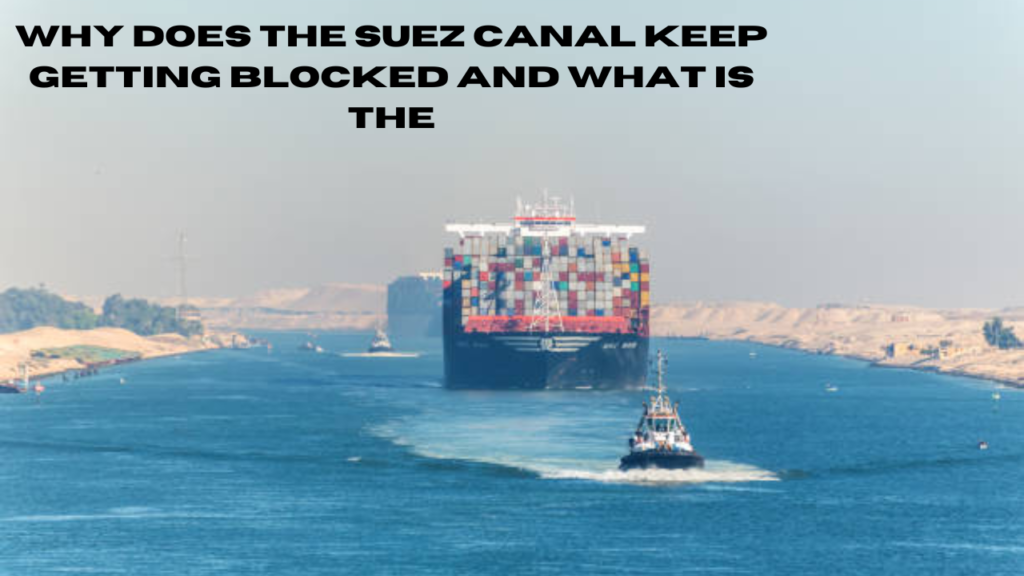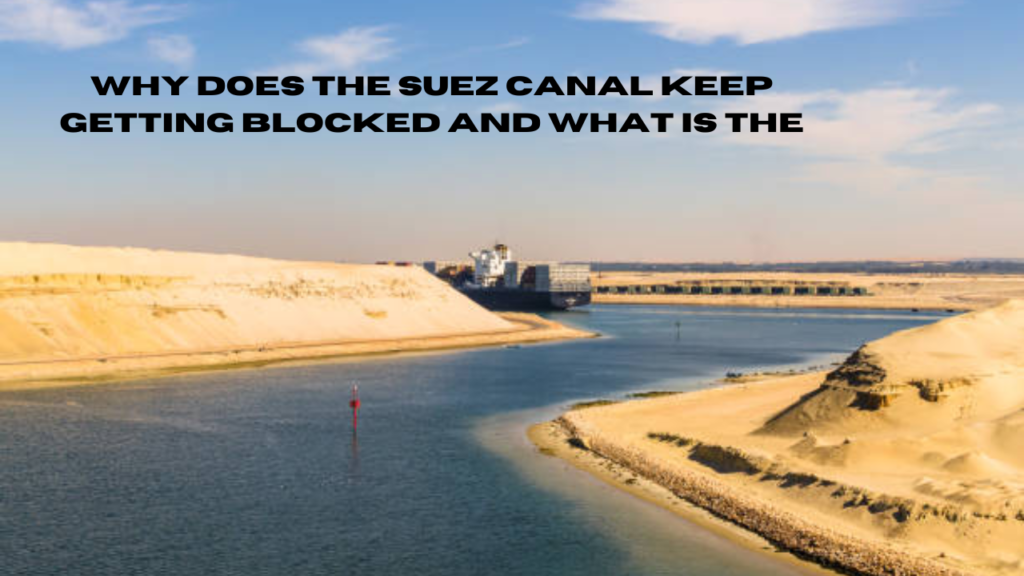The Suez Canal, a linchpin of global maritime trade, consistently draws attention for its strategic importance and occasional disruptions. It is a vital link between the Mediterranean and the Red Sea, facilitating faster transportation of goods between Europe, Asia, and beyond. However, its reputation as a critical trade route has a recurring challenge: blockages. Why does the Suez Canal keep getting blocked and what is the broader impact of these disruptions? Let’s delve deeper.
Factors Contributing to Blockages
Over the years, the Suez Canal has experienced several blockages, each with unique causes and consequences. Understanding the primary reasons for these disruptions is crucial for identifying potential solutions.
Human Error
Human error remains one of the leading causes of blockages in the Suez Canal. Incorrect navigation, mishandling of ships, or inadequate personnel training can lead to catastrophic incidents. The 2021 grounding of the Ever Given, a massive container ship, is a prime example. Poor steering decisions and navigation challenges in the narrow canal lodged the ship, halting traffic for six days.
Adverse Weather Conditions
The Suez Canal’s location exposes it to extreme weather conditions, such as strong winds, sandstorms, and sudden temperature shifts. These factors can impair visibility and destabilize vessels, making navigation difficult. For instance, the Ever Given incident was partly attributed to high winds that caused the ship to veer off course.
Technical Failures
Mechanical issues with ships or canal infrastructure can also lead to blockages. Engine failures, steering malfunctions, or breakdowns in critical systems can render a vessel immobile, obstructing the narrow waterway. The canal’s infrastructure occasionally faces wear and tear, which can exacerbate such problems.
Geopolitical Tensions
The Suez Canal’s strategic significance makes it a focal point during geopolitical crises. Conflicts in the Middle East, terrorist attacks, or intentional blockades can disrupt operations. Historically, the canal has been closed multiple times due to wars, notably during the Suez Crisis in 1956 and the Six-Day War in 1967.
Increasing Ship Size
Modern shipping trends favor larger vessels to maximize cargo capacity and reduce shipping costs. However, these colossal ships pose a challenge for the Suez Canal. The narrow passage leaves little room for error, making it difficult to maneuver these giants, especially during adverse conditions.

Consequences of Suez Canal Blockages
When the Suez Canal is blocked, the ripple effects are felt worldwide. Why does the Suez Canal keep getting blocked and what is the aftermath of these incidents? The consequences are multifaceted and far-reaching.
Economic Disruption
The Suez Canal handles approximately 12% of global trade. A blockage can delay the delivery of goods, leading to disruptions in supply chains. Industries reliant on just-in-time inventory, such as automotive and electronics, are particularly vulnerable. The Ever Given incident caused an estimated $9.6 billion in trade losses daily.
Increased Shipping Costs
When the canal is obstructed, ships must reroute around the Cape of Good Hope, significantly increasing travel distance and fuel consumption. This raises shipping costs and delays deliveries, impacting businesses and consumers alike.
Environmental Impact
Longer shipping routes result in higher greenhouse gas emissions, contributing to environmental degradation. Oil spills or vessel damage during blockages can also directly harm marine ecosystems.
Geopolitical Strain
A blocked Suez Canal can heighten tensions among nations relying on the route for energy imports and exports. Disruptions may also lead to disputes over responsibility and compensation, further complicating international relations.
Solutions and Preventive Measures
Given the recurring nature of blockages, stakeholders are actively exploring solutions to mitigate risks and improve the canal’s resilience.
Dredging and Widening
Expanding the canal’s width and depth can accommodate larger vessels and reduce the likelihood of groundings. Recent upgrades, including parallel lanes, aim to improve traffic flow and minimize disruptions.
Enhanced Navigation Technology
Advanced navigation systems, such as GPS tracking, automatic identification systems (AIS), and real-time weather monitoring, can assist ships in navigating the canal safely and provide early warnings of potential hazards.
Improved Training for Crew
Investing in ship crew training and certification can significantly reduce the risk of human error. Simulation-based training, focusing on navigating narrow waterways like the Suez Canal, can prepare crews for challenging scenarios.
Diversification of Trade Routes
Alternative trade routes are being explored to reduce overreliance on the Suez Canal. For instance, the Northern Sea Route through the Arctic offers a shorter path between Europe and Asia. However, it comes with challenges like ice navigation and environmental concerns.
International Cooperation
Collaboration between countries is essential to address security and safety concerns in the Suez Canal region. Joint efforts can include sharing navigation data, deploying patrols to ensure safety, and providing financial support for infrastructure upgrades.
The Importance of Eco-Friendly Practices
While addressing blockages is a priority, it is equally important to adopt eco-friendly practices. The maritime industry must focus on reducing emissions, minimizing waste, and protecting marine ecosystems. Initiatives such as green shipping corridors, fuel-efficient vessel designs, and alternative fuels like hydrogen and ammonia can play a significant role in achieving sustainability goals.

Also Read: A 529 Plan Can Help You Save More Money Than a Traditional Savings Account Because
Last Review
Why does the Suez Canal keep getting blocked and what is the broader impact of these incidents? The Suez Canal’s strategic importance makes it a vital artery of global trade, but its vulnerability to blockages poses significant challenges. Factors such as human error, adverse weather, technical failures, geopolitical tensions, and increasing ship sizes contribute to these disruptions. The consequences, ranging from economic losses to environmental damage, underline the need for robust solutions. The risks can be mitigated by investing in infrastructure upgrades, advanced technology, crew training, and eco-friendly practices. Ultimately, ensuring the smooth and sustainable operation of the Suez Canal is crucial for maintaining the stability of global trade.































Comments 1